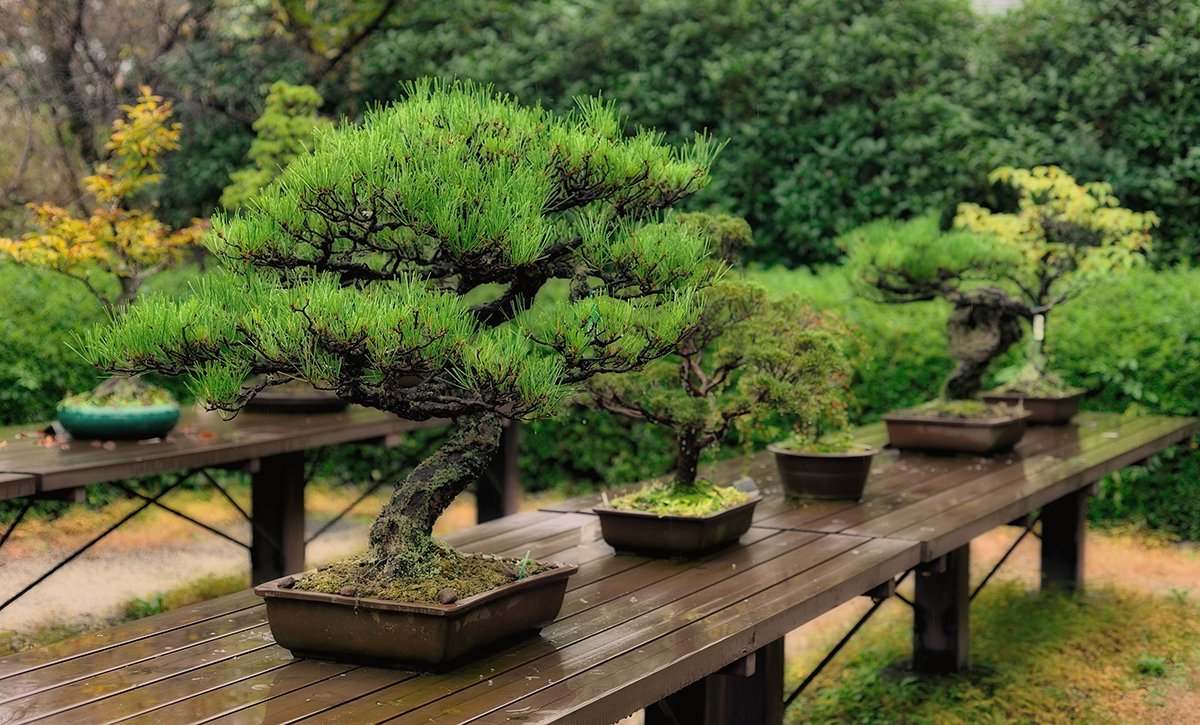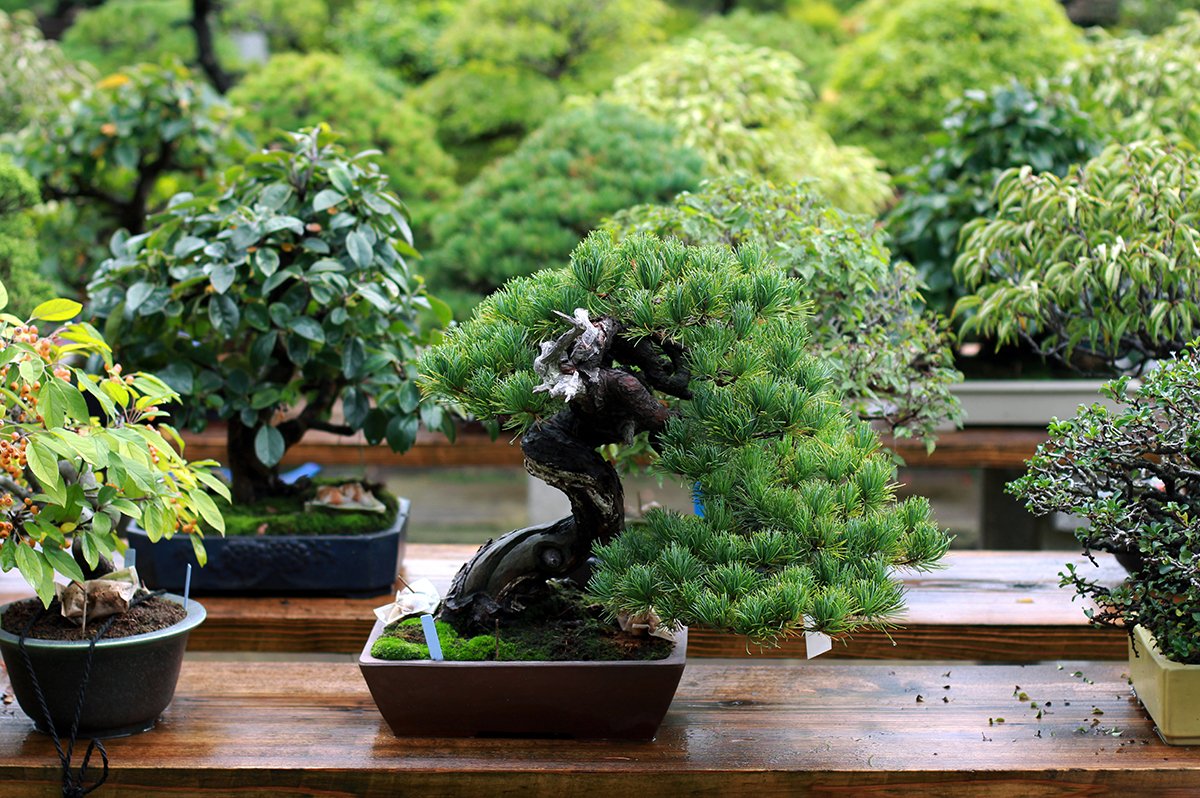Although bonsai is a word we hear often, surprisingly few Japanese people can say that they "do it themselves." However, did you know that it is extremely popular overseas and is also known as "BONSAI"?
Here we will introduce the reasons why bonsai has become so popular, its origins, and the reactions to bonsai from overseas.
Bonsai is becoming increasingly popular overseas

We will explain how "bonsai" became popular overseas.
What triggered its rise in popularity?
Japanese bonsai has been gradually gaining recognition overseas since the end of World War II, but it is said that the major turning point that sparked its popularity was the 1970 World Exposition in Japan.
The Japanese gardens installed at the Japan World Exposition attracted many foreign visitors, and the bonsai, which expressed nature in a single pot, attracted particular attention.
In particular, he was highly praised for his depictions of large trees, usually only seen on the ground, cut into pots and expressed as works of art that are never complete despite the various techniques he employs.
Bonsai is now known as "BONSAI" in Japanese overseas, and bonsai exhibitions are being held vigorously. According to the Japan External Trade Organization (JETRO), the export value of bonsai trees and other plants exceeded 8 billion yen in 2016, and the Ministry of Agriculture, Forestry and Fisheries is aiming to expand exports to 15 billion yen by 2020.
What is the origin of bonsai?
Although the current word bonsai is Japanese, it originally originated in China. The Chinese word "bonsai" is pronounced "penzai" and simply means a potted plant, but it is said that around 700 AD, "Pun-Sai," a small plant grown in a pot, was invented.
Bonsai is said to have been introduced to Japan around the Kamakura period, when other Chinese cultures began to be actively adopted. During the Edo period, it was refined by artisans and has now become established as a uniquely Japanese culture.
It is common for cultures and arts to evolve over time from China into something uniquely Japanese, and bonsai can be said to be one such art form that deals with nature.
Bonsai is a traditional Japanese culture, but at one time it was considered "only for the elderly" and "a hobby for enthusiasts." However, as it has gained high praise from around the world, it seems that bonsai is being reevaluated in Japan as well.
Bonsai's holy land! Overseas fans gather at the World Bonsai Convention!
The World Bonsai Convention, held every four years, is also popular among bonsai fans. Since the first one was held in Saitama Prefecture, it has been held all over the world, including in the United States, South Korea, Germany, and Puerto Rico.
The most recent tournament was held in 2017, the second time in 28 years that it was held in Saitama City, and it excited bonsai fans from all over the world, with bonsai worth 100 million yen on display.
The next event is scheduled to be held in Australia in 2021, and it is already attracting keen attention both from within Japan and overseas.
Bonsai videos are also popular! Overseas reactions

Bonsai is popular overseas, and if you search for "BONSAI" on YouTube, you'll find many videos. Here we'll introduce some of the reactions from overseas to videos on how to make bonsai.
(https://www.youtube.com/watch?v=L1FDfwyjkrs)
A YouTube video titled "How to Make Bonsai" explains how to make bonsai entirely in English, and as of February 2020, it has been viewed 6.3 million times.
The video clearly explains the steps to turn a tree purchased from a bonsai garden into a bonsai, including potting it yourself, pruning the branches, and how to create a design. The comment section has been filled with comments such as the following:
Thank you for the tips! I love bonsai even more now (Brazil)
I like it! I'll try it next time (Türkiye)
It's simply beautiful and wonderful (Spain)
This video is very helpful and easy to understand for bonsai beginners (Philippines)
This is a great video, so I hope you continue to update it! (India)
I'll share the tips and tricks with everyone because they're easy to understand. I think it will improve your gardening skills. (Morocco)
It's easy to understand and interesting. Thank you for uploading it! (Russia)
The fact that people from many countries have commented on the bonsai video shows how much attention it is receiving.
summary

Bonsai was introduced to Japan from China long ago and is now a uniquely Japanese culture, but after it was shown to people all over the world at the Expo '70, it began to gain more bonsai fans overseas. The World Bonsai Convention, held in various countries every four years, has attracted attention, and videos explaining how to make bonsai in English have garnered many views and received comments from many countries, showing that its popularity shows no signs of waning.
Bonsai has become so widespread that it has become a universal word, so it might be a good idea for Japanese people to take another look at the appeal of bonsai.
This article has been partially re-edited by KARUTA from an article originally published on "Nihongo Biyori."
Any unauthorized reproduction or use of the contents, text, images, illustrations, etc. of this website is strictly prohibited.
